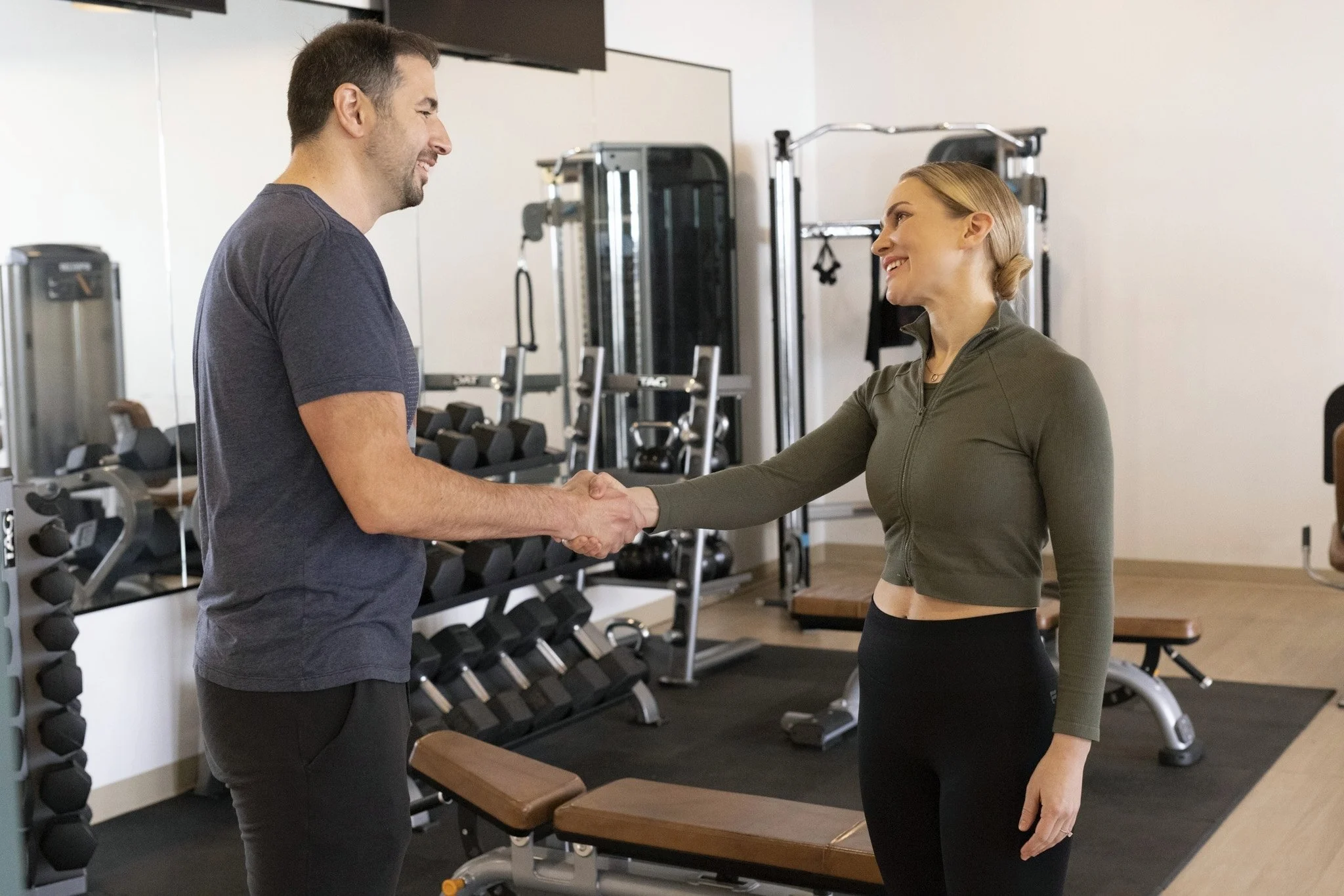Build PATH
Build PATH is more than a fitness plan—it’s a structured, sustainable approach to improving your health, strength, and habits at any phase of life.
Created from over 20 years of experience in personal training and coaching, Build PATH combines expert fitness programming with personalized support to help you make real, measurable progress. If you're ready to get in shape, eat in a way that actually feels good, and build lasting change through aligned habits and mindset work, you're in the right place.
More than a program—A foundation for real change
Build PATH is for people who are ready to stop guessing, stop starting over, and finally create a structure that supports long-term health, strength, and self-trust.
This isn’t about perfection—it’s about progress that lasts.
Fitness That Fits Your Life
No more random workouts, burnout from overtraining, or routines that don’t lead to progress.
Your plan is built around your goals, abilities, and schedule, so you can build strength, mobility, and consistency without sacrificing your life to the gym, or falling for the latest trends.
Nutrition Without the Noise
Skip the diet dogma and like what you eat. You’ll get personalized macro guidance and meal planning support that helps you eat in a way that feels good, fuels your body, and works in real life—whether you're meal prepping, navigating old habits, or learning how to eat for your current phase of life.
Habits That Actually Stick
Most programs stop at surface-level goals. Build PATH helps you identify what’s really holding you back and gives you the tools, support, and mindset shifts to create lasting change—so you’re not just healthier, but more aligned and in control.
Build PATH is for people ready to take a lifestyle approach to better health
Whether you’re starting fresh or building on an existing foundation, Build PATH is designed to help you move better, eat smarter, and stay consistent—even when life gets busy. With expert coaching and personalized tools, this is your opportunity to turn intention into aligned action and create lasting change that fits your real life.
Option 1: Build PATH Coach
Best for those ready to fully commit to a lifestyle transformation.
Build PATH Intensive offers high-touch coaching, personalized fitness and nutrition support, and weekly check-ins to help you build lasting habits and stay aligned—even as life shifts around you.
$249.95/month with a 6-month commitment
What You Get:
Weekly check-ins with coach feedback
Guided journal exercises for clarity, focus, and insight
Fully customized training program and workout schedule
Personalized macro targets + meal tracking
Custom meal plan tailored to your goals
Strategic goal setting with habit tracking
Built-in mindfulness & wellness practices (yoga, breathwork, meditation)
Two-way messaging with Arrabella
Ongoing wellness education integrated into your coaching
Access to private client community
Option 2: Build PATH Active
Best for those with a solid foundation who want to stay on track with structured support. Build PATH Active provides consistent guidance through monthly check-ins, updated training programs, and personalized nutrition tools—perfect for maintaining momentum while building confidence and independence in your wellness journey.
$149.95/month with a 6-month commitment
What You Get:
Monthly check-ins
Custom training program updated monthly
Macro targets + tracking tools
One custom meal plan per month (with swap + self-build options)
Ongoing workout and nutrition adjustments
Two-way messaging (responses within 1 business day, up to 1x/week)
Light wellness/mindfulness content
Access to private client community groups
What’s Not Included:
❌ Weekly coaching check-ins
❌ Journal prompts or habit strategy coaching
❌ Deep mindset coaching or transformation planning
❌ Customized mindfulness practices (yoga, breathwork, meditation)
❌ In-depth nutrition education or layered goal setting
How to get started with Build PATH
-

Choose Your Build PATH Option
Decide which Build PATH option best matches your current goals and the level of support you’re looking for. If you're unsure, you can take the placement quiz or schedule a free consultation to figure out the right fit.
-

Apply and Watch for Your Welcome Email
Once you apply for your chosen option, you’ll receive a welcome email with your personalized intake package. This includes everything you need to officially begin your coaching experience.
-

Set Up Your Dashboard and Begin Coaching
Complete your intake forms, download the ARVAmethod app, and follow the setup steps. From there, you'll access your personal dashboard, custom program, and the full Build PATH coaching experience.
The utimate 7-Day habit reset guide
Unlock your potential with evidence-based strategies designed to effectively reset your daily routines. This proven approach helps you build unstoppable momentum, guiding you toward profound and lasting transformation.
Real Stories, Real Transformation
Resources
Discover practical tips, in-depth discussions, and fresh perspectives to inspire and guide your unique journey toward a more aligned and vibrant life.
Frequently Asked Questions
Have questions about Build PATH Coaching?
Here, you'll find answers to common inquiries about this transformative program and what you can expect.
-
No, this is not just a workout app. While the ARVAmethod app is where you’ll receive your training plan, meal guidance, and tracking tools, you are working directly with me as your coach. I customize your workouts, meal targets, and check-ins based on your unique goals, lifestyle, and progress. You’ll also get personal feedback, messaging, and regular updates—so you’re never doing this alone.
-
No problem. I’ll build your training program around what you do have access to—whether it’s a full gym, home dumbbells, resistance bands, or just your bodyweight. You’ll never be given a plan that doesn’t work for your real life.
-
es. You can upgrade or downgrade anytime based on your schedule, needs, or goals. Many clients begin with Coaching for structure and support, then move to Guidance when they feel confident in their routines. This flexibility allows you to stay supported at every stage of your wellness journey.










